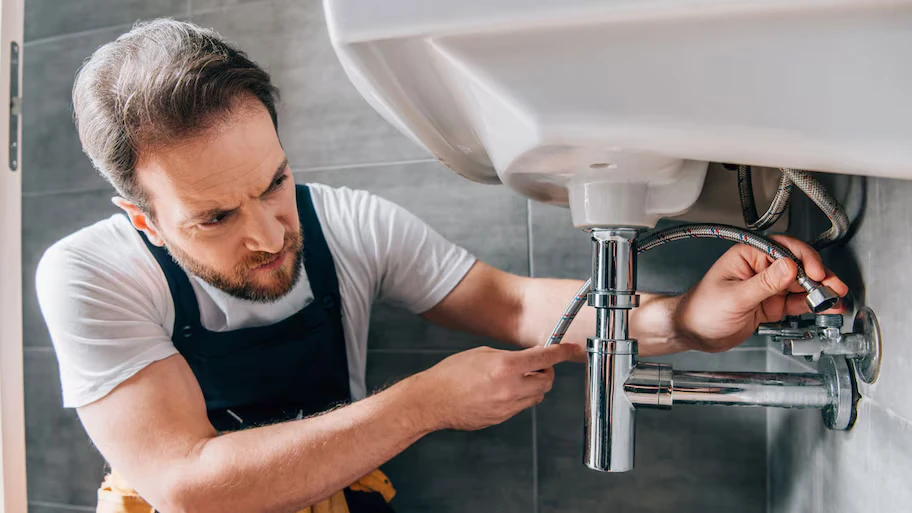Indoor plumbing is a marvel of modern engineering that has significantly improved our quality of life. Imagine a world without the convenience of running water, toilets, or showers. It’s hard to fathom, isn’t it? This essential service, which we often take for granted, has a rich history that dates back thousands of years. Understanding the evolution of indoor plumbing not only gives us insight into human ingenuity but also highlights its profound impact on public health and daily living.

1. The Origins of Indoor Plumbing
Ancient Civilizations
The story of indoor plumbing begins in ancient times, with some of the earliest systems found in Mesopotamia around 3200 B.C. and the Indus Valley around 2500 B.C. These early societies used clay pipes to transport water and constructed brick latrines for sanitation purposes. The Indus Valley civilization even included special rooms for toilets and bathing in their home designs, showcasing an advanced understanding of hygiene.
Roman Innovations
The Romans were pioneers in plumbing technology, developing intricate aqueducts and sewage systems as early as 300 B.C.. They used lead, bronze, and clay pipes to distribute water throughout their cities, significantly improving urban sanitation and public health. Public baths were a staple of Roman life, promoting hygiene and social interaction. These innovations laid the groundwork for modern plumbing systems, although much of this knowledge was lost after the fall of the Roman Empire.
2. The Middle Ages: A Step Backwards
Following the collapse of the Roman Empire, Europe experienced a decline in plumbing knowledge. The Middle Ages were marked by poor sanitation and a lack of clean drinking water, leading to frequent outbreaks of disease. Many cities struggled to maintain even basic plumbing systems, resulting in a significant setback for public health. This period highlights the importance of plumbing in maintaining societal well-being.
3. The Renaissance: Reviving Plumbing Innovations
Key Figures
The Renaissance brought a renewed interest in science and technology, including plumbing. Sir John Harrington, a notable figure of this era, invented the first flush toilet in 1596. Although his invention was not widely adopted at the time, it set the stage for future advancements in toilet design.
Technological Advancements
During the Renaissance, there was a revival of interest in hygiene and plumbing technology. This period saw the development of more sophisticated plumbing systems, as people began to recognize the importance of sanitation for public health. These advancements laid the foundation for the modern plumbing systems we use today.
4. The 19th Century: The Birth of Modern Plumbing
Major Developments
The 19th century was a pivotal time for plumbing, marked by significant technological advancements. In 1775, Alexander Cummings invented the S-trap, a device that prevented sewer gases from entering buildings through drains. This innovation was crucial in improving the safety and functionality of indoor plumbing systems.
Urbanization and Public Health
As cities grew during the 19th century, the need for efficient plumbing systems became more pressing. Urbanization led to the development of comprehensive sewer systems to combat diseases like cholera and typhoid fever. These improvements in public health infrastructure were instrumental in reducing the spread of infectious diseases.
Thomas Crapper’s Influence
Thomas Crapper, a prominent plumber of the late 19th century, played a key role in popularizing indoor plumbing. His company manufactured and installed toilets, making them more accessible to the general public. Crapper’s efforts helped to normalize the use of flush toilets, paving the way for widespread adoption in homes and businesses.
5. Technological Advancements in the 20th Century
Standardization and Codes
The 20th century saw the development of plumbing codes and standards to ensure safety and efficiency. These regulations standardized the design and installation of plumbing systems, improving their reliability and accessibility. The establishment of these codes was a significant step forward in the evolution of indoor plumbing.
Materials Used
During this time, there was a transition from lead to copper piping, which offered greater durability and safety. Modern materials like PVC and PEX have since become standard in plumbing systems, further enhancing their efficiency and longevity. These advancements have made plumbing systems more reliable and easier to maintain.
6. The Impact of Indoor Plumbing on Modern Living
Health Benefits
Indoor plumbing has had a profound impact on public health and hygiene. By providing access to clean water and efficient waste disposal, plumbing systems have significantly reduced the spread of waterborne diseases. This improvement in public health has contributed to longer life expectancies and better quality of life.
Lifestyle Changes
The convenience of indoor plumbing has transformed daily living in countless ways. From bathing and cooking to sanitation, access to running water has made household tasks more manageable and efficient. This transformation has allowed people to focus on other aspects of life, contributing to societal progress and development.
7. Future Trends in Indoor Plumbing
Sustainability Efforts
As we look to the future, sustainability is becoming a key focus in plumbing innovations. Efforts to reduce water consumption and improve efficiency are driving the development of new technologies and practices. These innovations aim to minimize the environmental impact of plumbing systems while maintaining their functionality.
Smart Plumbing Technologies
The rise of smart home technologies is also influencing the future of plumbing. From smart faucets to leak detection systems, these innovations offer greater control and efficiency in managing water usage. As technology continues to advance, we can expect even more exciting developments in the world of plumbing.

